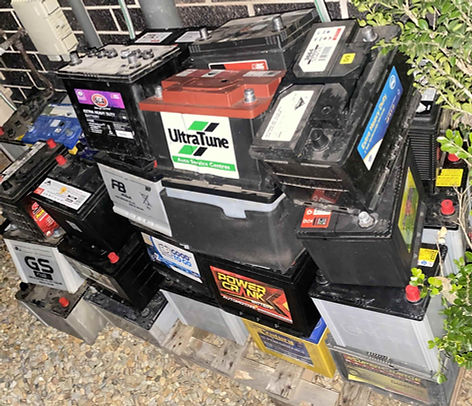The good old car battery is an essential bit of kit for powering our vehicles, but when they start leaking, they can become a serious safety hazard. Proper disposal of a leaking car battery is super important so you protect yourself, others and the environment. Before we dive into what to do with a leaking battery, let’s first explore how to tell if your battery is, in fact, leaking.
How can I tell if a car battery is leaking?
Identifying a leaking car battery is important if you want to perform safe and proper maintenance on your car. If you think your car battery is leaking but aren’t sure what to look out for, there are several dead giveaway signs.
- First, check for any visible damage, like cracks or bulges in the battery casing
- A leaking battery often emits a strong, sulphur-like smell, (very much like rotten eggs or when you’re stuck behind an LPG-powered car)
- You might notice some corrosion around the battery terminals (a white, ashy substance)
- There’s liquid seeping from the battery (usually a clear or slightly yellowish fluid)
If you see any of the above items, handle your battery with care and follow the proper disposal methods outlined below.
Safety first!
Safety should be your top priority before you do anything with your battery. Remember, a leaking car battery contains harmful chemicals that can cause serious injuries or damage to your person.
Ventilate the area
Leaking batteries can release harmful gases. If you’re indoors, make sure the area is well-ventilated. Open windows and doors to allow fresh air to circulate, reducing the concentration of toxic fumes (particularly if you’re working in a shed or garage).
Double-check your gear
Make sure you equip yourself with the right protective gear before handling a leaking car battery. Here’s a handy list of things you will need:
- Safety glasses
- Rubber gloves
- Long sleeves and pants
- Sturdy boots (preferably steel capped)
- Avoid all sparks and flames
Important Note – Leaking batteries can emit flammable gases, so it's vital to avoid sparks or open flames nearby. If Uncle Barry is helping you remove the battery and has a cigarette hanging from his lip, it’s best to get him to put it out before he starts!
Neutralise the leak (if you can)
If you can safely access the leaking battery, you can neutralise the acid using a mixture of baking soda and water. Apply the mixture carefully, and watch for bubbling (this means the acid is being neutralised). Remember to wear your protective gear throughout this process.
Baking Soda recipe for neutralising car batteries
- Pour a few tablespoons of baking soda into a small container.
- Gradually add water while mixing with a spoon to form a thick paste.
- Add the baking soda paste to the car battery acid spill.
- You should see fizzing as the baking soda neutralises the acid.
Clean up spills thoroughly
After neutralising the leak, you can clean up any remaining spills. Use paper towels or disposable cloths to soak up the neutralised acid and dispose of them safely. Wash the affected area with water and a mild detergent (dishwashing liquid, laundry liquid or sugar soap works well).
Transport your battery carefully
When it’s time to transport the leaking battery, do it really carefully (we can’t emphasise this enough). Place the battery in a sturdy, acid-resistant container to prevent further leaks during transport. Secure the battery to avoid any movement that could cause additional damage.
Recycle responsibly
Never throw a leaking car battery in the wheelie bin. Lead-acid batteries contain hazardous materials that require proper recycling. Contact your local auto parts store, recycling centre, or waste disposal facility. They should be able to tell you if they take old batteries and what to do if you have a leaking battery.
Follow local regulations
Different councils have specific regulations for disposing of hazardous materials. Check with your local council to find out what the rules and requirements are for disposing of a leaking car battery in your area.
By following these steps, you can safely dispose of a leaking car battery, protecting yourself and the environment from potential harm. If you wear the right gear and carefully handle the battery, you will have a smooth and hazard-free disposal process. Remember, responsible disposal keeps you safe and contributes to a healthier planet.

